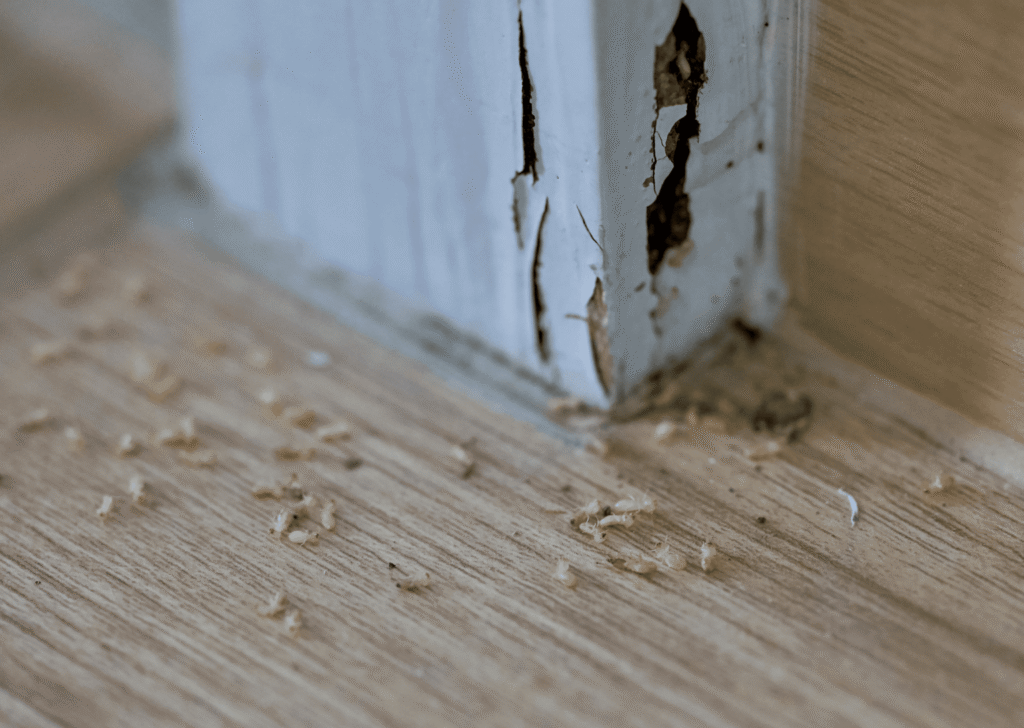It starts small—maybe a faint rustling late at night, a strange odor that wasn’t there yesterday, or a few specks near a baseboard you don’t remember seeing before.
It’s easy to brush these things off. After all, homes make noise. Dust collects. Pipes creak. But sometimes, those little anomalies are clues. And if pests have made their way behind your walls, those signs are just the beginning.
Unseen infestations are more common than most homeowners realize. Pests don’t always announce themselves in obvious ways. They prefer to stay hidden, building nests and colonies behind drywall, beneath floorboards, and inside attics or crawlspaces. And by the time the evidence is clear, the problem may already be extensive.
Let’s explore the telltale signs that pests may be lurking behind the scenes—and why early pest control action is crucial before they make themselves known in bigger, costlier ways.
1. Mysterious Noises That Don’t Belong
Houses naturally make sounds—settling wood, HVAC systems kicking on, wind pressing against siding. But pests make a different kind of noise.
You might hear:
- Light scratching or scampering inside walls, often at night
- Thumps or dragging sounds in the attic or ceiling voids
- Chirping, squeaking, or fluttering, especially from upper corners
These sounds tend to repeat at the same times—typically at dusk and dawn, when rodents and bats are most active. They often come from areas where no one is walking or moving.
If you notice consistent, unexplained sounds, it’s worth investigating. Even small rodents can cause big headaches once they establish a hidden presence.
2. Odd Smells That Appear and Linger
Pests bring with them a variety of scents. While not always strong, they tend to accumulate over time and can be especially noticeable in closed-up spaces like basements or behind furniture.
Common signs include:
- A musty, ammonia-like odor from rodent urine
- A pungent, sharp scent from cockroach droppings or decay
- A sour or acrid smell from a dead animal trapped in the wall
- A strong guano smell from a bat colony roosting in an attic
Smells that appear seemingly out of nowhere, particularly near vents, ceilings, or outlets, may be coming from something you can’t see—but should absolutely address.
3. Subtle Structural Clues
You don’t need to see a mouse to know one’s been through. Often, they leave behind small, easy-to-miss damage that hints at their presence.
Watch for:
- Small gnaw marks on wood, wires, or baseboards
- Tiny holes near floor corners or under cabinets
- Grease or rub marks along frequently used paths
- Loose insulation or disturbed materials in crawlspaces
Insects like termites or carpenter ants leave even more subtle evidence, like soft spots in wood, paint bubbling on the wall, or hollow-sounding panels when tapped.
Pest presence often starts small. A single gap can become a highway if left unchecked.
4. Unexplained Debris or Droppings
One of the most unmistakable signs of pests is droppings—and they don’t always show up in the open. A light sweep with a flashlight around seldom-used areas can reveal the truth.
Look for:
- Fine pepper-like specks (cockroaches)
- Small, rice-shaped pellets (mice or rats)
- Tiny black grains or flaky dust (bat guano)
Bat guano is especially deceptive, as it tends to collect near attic vents or on insulation before you ever see it inside your living space. If bats are suspected, bat removal should be handled promptly, especially before breeding season begins.
5. Insect Wings or Shells in Out-of-the-Way Places
Some insects are quiet visitors until they molt, swarm, or die. Leftover body parts, discarded wings, or exoskeletons are often the only sign they were there.
You may find:
- Shed termite wings near windowsills
- Piles of insect shells in basements or storage rooms
- Beetle husks in attic corners or crawlspaces
These signs may not be alarming on their own, but they suggest a larger population exists somewhere nearby—and that population may not stay hidden for long.
6. Pets Acting Strangely
Cats and dogs often notice pests before their humans do. If your pet begins staring at walls, barking at vents, or becoming unusually interested in a particular room or ceiling area, there may be something moving behind the scenes.
They may sniff incessantly at floorboards, pace beneath a ceiling area, or act nervous around certain furniture. While not a guaranteed sign of pests, sudden behavior changes—especially at night—shouldn’t be ignored.
7. Energy Bills That Don’t Make Sense
You may not think of pests as a reason for rising utility bills, but they can play a part. Rodents and raccoons disturb insulation in attics and walls, reducing your home’s ability to retain heat or cool air. Bats roosting in upper walls can block ventilation, increasing humidity or moisture retention.
If your heating or cooling bills spike unexpectedly—especially during mild weather—consider whether there could be damage or disturbance hidden behind the drywall.
Why Waiting Makes Things Worse
Hidden pest problems rarely stay that way. A quiet issue can turn urgent in a matter of days, especially if:
- A bat colony grows during maternity season
- A rodent chews through wiring, creating a fire risk
- Moisture and insect activity lead to mold or wood rot
By the time noise or odor becomes unavoidable, cleanup often involves not just removal but structural repair, odor remediation, and insulation replacement. This is why early action matters.
Professionals like Boone Wildlife and Pest Solutions specialize in identifying and resolving these hidden problems before they escalate. What starts with a subtle clue often ends in a much bigger repair when ignored too long.
Final Thoughts: Look Beyond the Surface
Your home may look clean and sound, but pests don’t need an invitation to settle in. Most infestations begin quietly, using the very walls and spaces you can’t see as safe havens to grow and multiply.
By learning the early signs—sounds, smells, debris, and subtle structural shifts—you give yourself the best chance to stop the problem before it stops you from feeling secure in your own home.
When in doubt, listen to your instincts (and maybe your pets). The moment something feels off, it’s time to investigate what’s going on behind the walls.







